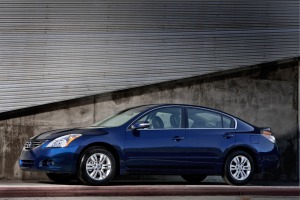Our staff, as well as other automotive enthusiasts, has noticed an ever-increasing level of interest about a new/old technology called CVT (continuously variable transmission) and its burgeoning rise in the automotive world.
We say "new/old" because CVT has actually been around since 1886, but has only recently begun to find its way into production automobiles.
CVT's promise, both as a boon to fuel economy and as a low-cost alternative to conventional transmissions, has prompted us to revisit the topic.
Since our article CVT For You and Me appeared, a number of automakers have brought new CVT-equipped vehicles to market, and more are on the way. We felt now was a good time to take a closer look at this innovative — and time-tested — technology.
As we mentioned above, CVT has been around for more than a hundred years. However, until recently, it was reserved for industrial applications — running lathes or light-duty drill presses, for instance. With the introduction of improved materials, such as high-density rubber belts, advanced hydraulics and, more recently, high-speed sensors and microprocessors, the stage was set for CVT's rise in the automobile.
CVT's design advantages lie not only in its efficiency but in its simplicity. It consists of very few components. A continuously variable transmission typically includes the following major component groups:
- a high-power/density rubber belt
- a hydraulically operated driving pulley
- a mechanical torque-sensing driving pulley
- microprocessors and sensors
That's it.
Because of this simplicity in design, CVT offers some advantages over traditional transmissions, although it also has certain drawbacks. For instance, its belt-driven orientation limits its application; until recently, cars with engines larger than 1.2 liters were considered incompatible with CVT. More and more, however, CVTs are becoming available that can handle more powerful engines, such as the V6 power plants found in some Nissan and Audi vehicles.
Other disadvantages include its larger size and weight.
Still, in the right situation, CVT's advantages outweigh its disadvantages. Less complexity and moving parts theoretically mean fewer things to go wrong and maintain.
The first U.S.-sold production automobile in the world to offer a CVT transmission was the Subaru Justy GL, from 1989 through 1993. The engine in that car was 1.2 liters.
How it Works
Although there are different variations on the CVT theme, most passenger cars use a similar setup. Essentially, a CVT transmission operates by varying the working diameters of the two main pulleys in the transmission.
The pulleys have V-shaped grooves in which the connecting belt rides. One side of the pulley is fixed; the other side is moveable, actuated by a hydraulic cylinder. When actuated, the cylinder can increase or reduce the amount of space between the two sides of the pulley. This allows the belt to ride lower or higher along the walls of the pulley, depending on driving conditions, thereby changing the gear ratio. If you think about it, the action is similar to the way a mountain bike shifts gears, by "derailing" the chain from one sprocket to the next — except that, in the case of CVT, this action is infinitely variable, with no "steps" between.
The "stepless" nature of its design is CVT's biggest draw for automotive engineers. Because of this, a CVT can work to keep the engine in its optimum power range, thereby increasing efficiency and gas mileage. This translates to a gain of about 1-2 mpg, but as with any car, your mileage will vary based on your driving habits. A CVT can convert every point on the engine's operating curve to a corresponding point on its own operating curve.
With these advantages, it's easy to understand why manufacturers of high-mileage vehicles often incorporate CVT technology into their drivetrains.
Look for more CVTs in the coming years as the battle for improved gas mileage accelerates and technological advances further widen their functionality.






